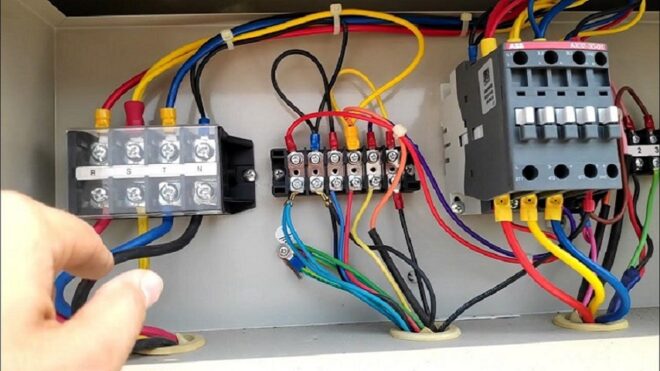
The Lighting Contactor Market is expected to be driven by an increasing emphasis on energy efficiency and a growing adoption of smart lighting solutions during the forecast period.
According to TechSci Research report, “Lighting Contactor Market – Global Industry Size, Share, Trends, Competition Forecast & Opportunities, 2029F”, the Global Lighting Contactor Market was valued at USD 1.67 billion in 2023 and is anticipated to project robust growth in the forecast period with a CAGR of 10.22% through 2029. The growing need for automation in building management systems (BMS) is significantly driving the Lighting Contactor market. As buildings become more complex and energy-efficient, the integration of automated systems to manage various functions, including lighting, has become essential. Lighting contactors are critical components in these systems, providing the automation necessary to optimize lighting control.
Automation in BMS involves the use of advanced technologies to monitor and control building operations, such as heating, ventilation, air conditioning (HVAC), lighting, and security systems. The goal is to enhance energy efficiency, improve occupant comfort, and reduce operational costs. Lighting contactors enable automated control of lighting systems, ensuring that lights are used efficiently and only when needed. In commercial and industrial buildings, automated lighting control can lead to substantial energy savings. For instance, lighting contactors can be programmed to turn off lights during non-working hours or adjust lighting levels based on occupancy sensors. This level of automation helps to minimize energy waste and extend the lifespan of lighting fixtures.
The trend towards smart buildings, which integrate IoT and artificial intelligence (AI) technologies, is further driving the demand for automated lighting control systems. Smart buildings use data from various sensors and devices to optimize building operations in real-time. Lighting contactors play a crucial role in these systems by enabling precise control and coordination of lighting based on real-time data and predictive analytics. Automation in BMS enhances building safety and security. Automated lighting control can be integrated with security systems to provide better visibility and deterrence in case of unauthorized access or emergencies. Lighting contactors ensure that these systems operate reliably and efficiently, contributing to overall building safety.
The increasing focus on green building certifications, such as LEED (Leadership in Energy and Environmental Design) and BREEAM (Building Research Establishment Environmental Assessment Method), is also driving the adoption of automated lighting control systems. These certifications require buildings to meet specific energy efficiency and sustainability criteria, which can be achieved through the use of advanced lighting contactors.
Browse over XX Market data Figures spread through XX Pages and an in-depth TOC on “Global Lighting Contactor Market.”
https://www.techsciresearch.com/report/lighting-contactor-market/24460.html
Based on Application, The Indoor Held segment held the largest Market share in 2023. Indoor environments, particularly commercial and industrial spaces, are significant consumers of electricity for lighting. As organizations seek to reduce operational costs and comply with stringent energy efficiency regulations, indoor lighting control systems, including lighting contactors, are increasingly in demand. These systems help optimize lighting usage by automating on/off cycles and integrating with occupancy sensors and dimming controls, thereby reducing energy consumption and operational costs.
The integration of advanced technologies, such as IoT and smart building management systems, is more prevalent in indoor settings. Electrically held lighting contactors, which offer reliable and precise control, are well-suited for these sophisticated systems. The growing trend towards smart buildings, where lighting systems are interconnected with HVAC, security, and other building systems, further drives the demand for advanced indoor lighting contactors.
Indoor lighting systems are subject to various regulations and standards aimed at improving energy efficiency and safety. Compliance with these regulations often necessitates the use of advanced lighting control solutions, including contactors that can meet the specific requirements of indoor applications. For instance, building codes and standards often mandate energy-efficient lighting solutions and advanced control systems for commercial and industrial buildings.
Indoor lighting systems are used extensively throughout the day, making the need for efficient and reliable control systems critical. The complexity of managing lighting in large indoor spaces—such as offices, factories, and shopping centers—drives the demand for sophisticated lighting contactors that can handle high loads and provide precise control.
Major companies operating in the Global Lighting Contactor Market are:
- Schneider Electric SE
- Siemens AG
- Eaton Corporation plc
- ABB Limited
- General Electric Company
- Honeywell International Inc.
- Mitsubishi Electric Corporation
- Signify N.V.
- Panasonic Corporation
- Rockwell Automation, Inc.
- Lutron Electronics Co., Inc.
- Ideal Industries, Inc.
Download Free Sample Report
https://www.techsciresearch.com/sample-report.aspx?cid=24460
Customers can also request 10% free customization on this report.
“The Global Lighting Contactor Market is expected to rise in the upcoming years and register a significant CAGR during the forecast period. The market opportunity in the Global Lighting Contactor market lies in the increasing demand for energy-efficient lighting solutions and smart building technologies. With the growing emphasis on sustainability, regulatory compliance, and the adoption of advanced lighting systems, manufacturers have the potential to capitalize on retrofitting projects and new installations.
The integration of IoT and AI in lighting control systems further enhances market prospects, providing opportunities for innovation and development of intelligent lighting contactors. Additionally, the push for green building certifications and energy-efficient infrastructure offers significant growth potential for market players”, said Mr. Karan Chechi, Research Director of TechSci Research, a research-based management consulting firm.
“Lighting Contactor Market – Global Industry Size, Share, Trends, Opportunity, and Forecast, Segmented By Type (Mechanically Held, Electrically Held), By Application (Indoor, Outdoor), By End-User (Commercial, Industrial, Municipal, Smart Residential Complexes) By Region & Competition 2019-2029F”, has evaluated the future growth potential of Global Lighting Contactor Market and provides statistics & information on Market size, structure and future Market growth. The report intends to provide cutting-edge Market intelligence and help decision-makers make sound investment decisions., The report also identifies and analyzes the emerging trends along with essential drivers, challenges, and opportunities in the Global Lighting Contactor Market.
Contact
Techsci Research LLC
420 Lexington Avenue,
Suite 300, New York,
United States- 10170
Tel: +13322586602
Email: [email protected]
Website: www.techsciresearch.com
